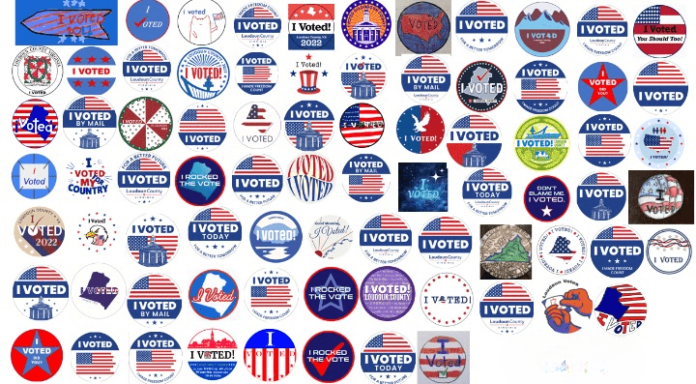The straightforward yet powerful I Voted Stickers has gained legendary status as a representation of civic involvement and democratic process participation. These stickers, which are frequently distributed at polling places, act as a catalyst to encourage others to take part in the electoral process in addition to acting as a badge of honor for those who have used their right to vote. This article examines the origins and significance of “I Voted” stickers, as well as the cultural phenomena that have sprung up around them and their ability to increase voter turnout.
Also Read Article: Maximillian Fuse: The Son of Olivia Hussey and Akira Fuse
Table of Contents
The Background of “I Voted” Stickers in History
Although its exact origin is unknown, the I Voted Stickers is thought to have become popular in the US around the middle of the 20th century. The idea to commemorate civic duty and enhance the voting experience was spurred by the need to provide voters with a tangible souvenir for their participation. At first, stickers were straightforward and frequently lacked any unique designs. But when they were used more frequently, other states and local governments started to create their own distinctive versions, which frequently included nationalistic or state emblems. The result of this development is a wide variety of I Voted Stickers, each of which reflects the characteristics and ideals of the community they are meant to represent.
“I Voted” stickers’ function in encouraging voter turnout
For a number of reasons, I Voted Stickers are essential for fostering civic engagement and voter turnout.
- Symbol of Civic Pride: Displaying a I Voted Stickers in public acknowledges one’s civic duty. It reaffirms that voting is a luxury as well as a right and gives people a sense of pride for taking part in the political process.
- Encouragement for Others: People may be motivated to vote if they see “I Voted” stickers prominently. People are inspired to talk about voting and its significance when they witness friends, family, or neighbors sporting these stickers. This effect has been enhanced by social media, as people frequently post images of their stickers there, igniting discussions and inspiring others to cast ballots.
- Celebration of Democracy: The stickers represent how people can work together to collectively influence their government. I Voted Stickers serve as a helpful reminder to people that voting is an essential part of democracy during times of political unrest or polarization. They also help to strengthen community relationships.
Trends and Cultural Significance
I Voted Stickers have grown beyond their initial use and have become a cultural phenomenon over time. These stickers have given rise to a number of movements and trends that emphasize their importance outside of the voting booth:
- Creative Expression: A lot of designers and artists have embraced the I Voted Stickers as a blank canvas on which to express their ideas. Often created by regional artists or organizations, limited edition designs have the power to elevate an ordinary sticker into a valuable collector. Through their voting stickers, communities are able to express their individual identities in a way that is both visually appealing and unique.
- Merchandising and Collecting: “I Voted” stickers have become highly sought-after collectibles as a result of the growth of online marketplaces. To celebrate the variety of designs and themes, some people even compile enormous collections of stickers from various elections and states. This pattern emphasizes the strong emotional bond that many individuals have with voting and the symbols connected to it.
- Awareness Campaigns: A number of organizations have used the “I Voted” sticker phenomenon to raise awareness of voter registration and turnout. These groups work to include the public and remind them of the value of voting by handing out stickers at neighborhood gatherings or forming alliances with nearby companies.
“I Voted” stickers’ future
The meaning of I Voted Stickers will change as voting practices continue to change. Technological improvements may lead to the emergence of digital alternatives that would enable voters to share their involvement through mobile apps or social media. Still, those who value the act of displaying their civic pride might continue to find appeal in the concrete aspect of actual stickers. Furthermore, the dissemination of I Voted Stickers could function as a means of promoting more inclusive voting procedures as conversations regarding voting rights and accessibility gain momentum. Organizations and communities will continue to face the critical problem of ensuring that every citizen, regardless of background or circumstances, has the chance to participate in elections.
Conclusion
I Voted Stickers are more than just a token offered at polling locations; they are symbols of civic engagement, community involvement, and democratic joy. These stickers are essential in increasing voter participation and cultivating a culture of active citizenship because they inspire people to take pleasure in their voting experiences and motivate others to participate as well. The I Voted Stickers legacy is expected to last into the future, motivating new generations of voters to participate in the democratic process. The message is still the same, whether it is communicated through art, awareness-raising efforts, or even as simple as donning a sticker: every vote counts and engaging in democracy is a potent way for both individual and group agency to be expressed.





